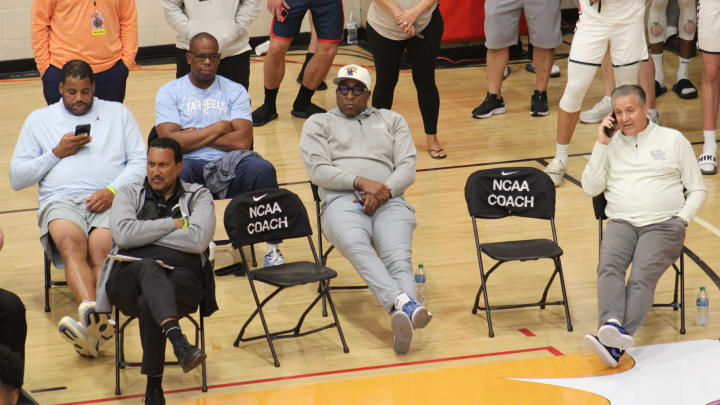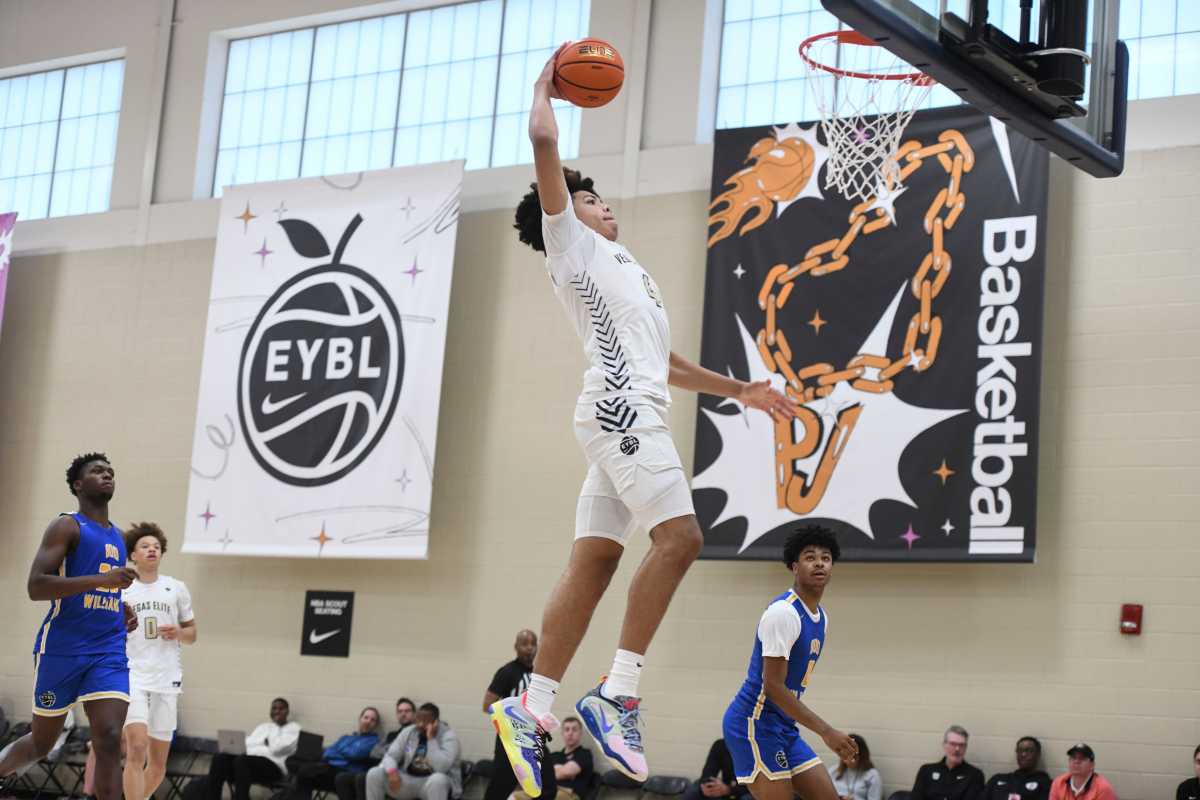Why College Coaches Believe High School Basketball Recruiting Needs an Overhaul

At a time when high school recruiting is seen as far less important due to the annual influx of names in the transfer portal, several college coaches Sports Illustrated spoke with at Nike’s EYBL Peach Jam tournament feel the current recruiting calendar and game times within the live periods are only further hurting limiting high school players’ recruitments.
The 2023–24 college basketball season projects to be the first one ever during which more than 50% of points nationally are scored by transfers. Increased access to older, more proven college players has made coaches want to invest fewer resources in recruiting freshmen throughout the spring and summer. Scholarships that were once filled by freshmen in the fall of their senior years of high school are now being held for the spring by college teams hoping to add transfers. And the limited time coaches get to evaluate high school players in settings like Peach Jam is only adding to concerns about recruiting freshmen.
Changes this year to the recruiting calendar meant that the major shoe company circuits (led by Nike) had just three events with college coaches allowed to be present this year. The first two periods were in April, when coaches were more focused on recruiting transfers for the next season. The primary July live period is when coaches are more centrally focused on high school players, but shifts to the Peach Jam schedule into a week-long event (with NBA scout access early in the week before the event opens up to college coaches Thursday) limits the number of games players get evaluated by colleges. Teams now rarely play twice in one day, something that used to be common practice.

If a player’s team didn’t advance into the bracketed round, he likely only played two games in front of college coaches while at Peach Jam, and those were often in packed game-time windows with several 17U games going on at the same time. One mid-major head coach told SI the schedule meant he wasn’t able to watch some of his main targets in the 2024 high school class play in-person at all while at the event, something that would have been unthinkable a few years ago.
Plus, there’s clear recruiting burnout around the sport, given how late in the year roster spots are still being filled. Coaches spend April and May balancing live period events with filling their roster, then have two recruiting weekends each in June and July, and in some cases still have a scholarship or two available to work with for the upcoming season. There’s clearly an appetite for major changes to the current recruiting calendar to lessen the load on coaches, shifts that could further disrupt what has already become a challenging recruiting environment for high school players.
